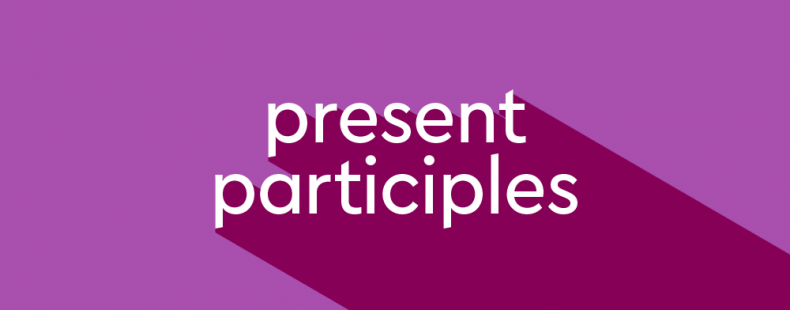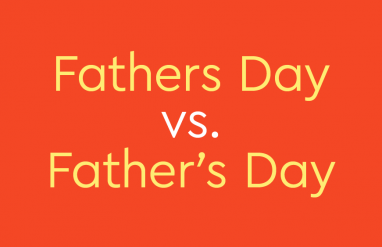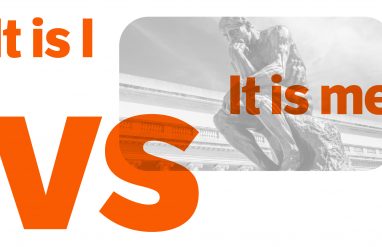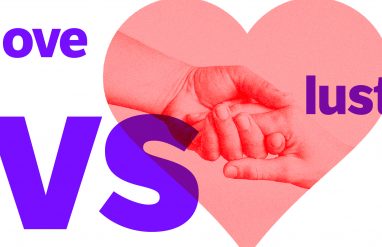Participles are useful words that can be easily confused with verbs. This is understandable, though, as participles often look identical to verbs and are derived from them. However, participles deserve their own time to shine because they can do a lot of jobs that verbs can’t. Right now, we will look at an especially helpful type of participle known as the present participle.
What is a present participle?
A participle is a type of word derived from a verb that is used for a variety of purposes, such as an adjective or to construct verb tenses.
A present participle can be used as an adjective and to form the continuous verb tenses. It is formed from the root form of a verb. The root form of a verb is the one you will find if you look up a verb in our incredible dictionary. In general, we add -ing to the end of the root form of a verb to make a present participle. For example, the present participle of eat is eating.
However, there are a few additional rules to keep in mind when forming present participles:
- If a verb ends in -e, we drop the -e. For example, the present participle of bite is biting. However, if a verb ends in -ee, we just add -ing. For example, the present participle of see is seeing.
- If a verb ends in -ie, we change the -ie to -y. For example, the present participle of tie is tying.
- If a one syllable verb ends in consonant-vowel-consonant, the final consonant is doubled. For example, sit becomes sitting and chat becomes chatting.
- If a longer verb ends in consonant-vowel-consonant, the final consonant is only doubled if the last syllable is stressed. For example, forget becomes forgetting but orbit becomes orbiting.
And that is it! Irregular verbs behave the same way as regular verbs when turned into present participles. Even the infamously tricky verb be follows the rules and becomes being.
⚡️Examples of present participles
The following list contains examples of a variety of present participles. You’ll notice that some of these participles have slightly different spelling from the root forms of verbs due to the rules stated above.
- appearing, bending, catching, donning, entering, facing, getting, having, inching, jumping, kicking, letting, mumbling, nodding, opening, putting, quaking, resting, sleeping, tossing, unlocking, visiting, whistling, yelling, zipping
How to use present participles
We can use present participles in a variety of ways in sentences and clauses. Some common reasons we would use them include as part of participle phrases, as adjectives, or to form the continuous verb tenses.
Present participles in participle phrases
A participle phrase, or participial phrase, is a phrase that includes a participle and other parts of speech, such as nouns, modifiers, and prepositional phrases. Participle phrases are used in a similar way to adjectives: we use them to modify nouns, pronouns, and noun phrases. Typically, we want to put the participle phrase as close to the noun it modifies as possible.
The following examples show present participles used in participle phrases:
- She saw Ted feeding the birds at the park.
- Students often have trouble understanding calculus.
- I think that the cat next door is the one making all of that noise.
We can also begin sentences with participle phrases. If we do, we separate the participle phrase from the main sentence with a comma.
- Thinking quickly, Sasha grabbed a wrench to fix the leaky pipe.
- Forgetting his manners, Kenny didn’t shake my hand.
- Hoping she wouldn’t notice me, I sat as far away from my teacher as possible.
What is a preposition? Learn more about them here.
Present participles as adjectives
Present participles can also be used on their own as adjectives. Just like all other adjectives, we put them immediately before nouns or connect them to a subject with a linking verb. For example,
- I tried and failed to get rid of the annoying fly.
- It is never a good idea to disturb a sleeping bear.
- This book is really boring.
- The reviews said that the movie gets much more exciting in the second half.
Present participles as verbs
While present participles aren’t used as verbs by themselves, they can be used with helping verbs to form the continuous verb tenses.
Verb tenses that use present participles
Present participles of verbs are used with the verb be and the phrase will be in order to form the continuous tenses. Present participles are used with the phrase have/has been to form the present perfect continuous tense, the phrase had been to form the past perfect continuous tense, and the phrase will have been to form the future perfect continuous tense.
The following sentences show examples of how present participles are used to form six different verb tenses.
- Present Continuous: My dogs are chasing their tails.
- Past Continuous: My dogs were chasing their tails.
- Future Continuous: My dogs will be chasing their tails for a while yet.
- Present Perfect Continuous: My dogs have been chasing their tails all morning.
- Past Perfect Continuous: My dogs had been chasing their tails for a while before they stopped to eat.
- Future Perfect Continuous: I am guessing that my dogs will have been chasing their tails for a long time when I finally find out where they are.

Why present participles matter
Present participles are important because they can do a lot of useful things that verbs can’t. Present participles, as well as the other types of participles, allow us to make more complex sentences by acting as modifiers. If you can imagine a world without adjectives (horror!), you can understand how important present participles are. Not only that, present participles are needed in order to use the continuous verb tenses. Without present participles, English grammar would definitely be missing a lot of useful tools that we can build complicated sentences with.
What to be cautious of when using present participles
There are a few things to keep in mind when using present participles. The first thing to be cautious of is not unique to present participles: when using any participle phrase, make sure it is clear what word/phrase is being modified. Typically, this is done by putting the modified word/phrase as close as possible to the participle phrase. It is also important to check your sentences to make sure you are not using a participle phrase as a misplaced or dangling modifier. The following sentences show an example of a correctly used participle phrase as well as two incorrect uses of participle phrases.
- Correct: Smiling mischievously, Jenny hid a water balloon behind her back.
- Misplaced modifier: Smiling mischievously, a water balloon was hidden behind Jenny’s back.
- Dangling modifier: Smiling mischievously, her arms shielded the water balloon from sight.
Present participle vs. gerund
Because they have identical forms, it can be easy to confuse present participles with gerunds. Just like present participles, gerunds also are derived from verbs and end in -ing. For example, both the present participle and gerund of the verb run is running. However, gerunds and present participles are used very differently. In order to tell these two apart, you must know how each are used:
- Present participles are used as modifiers and in continuous verb tenses.
- Gerunds are used as nouns, which means they can be used as subjects and objects.
Using this information, we can easily identify whether a word is a gerund or a present participle. Let’s use this knowledge to identify the words in the following sentences:
- Cooking is a fun hobby. In this sentence, cooking is the subject of the sentence and is acting as a noun. It must be a gerund.
- I bought several cooking utensils at the store. In this sentence, cooking is acting as an adjective to modify the noun utensils. It must be a present participle.
- I hate cleaning my room. In this sentence, cleaning my room is the direct object of the sentence. Cleaning is a gerund that begins the gerund phrase cleaning my room.
- We talked to the man cleaning the gutters. In this sentence, cleaning the gutters is modifying the noun man. Cleaning is a present participle that begins the participle phrase cleaning the gutters.
Have fun using participles with Grammar Coach™
Past participle? Present participle? You’ll never mistake participles again when you check your writing on our superlative tool: Thesaurus.com’s Grammar Coach™. This writing tool uses machine learning technology uniquely designed to catch grammar and spelling errors. Its Synonym Swap will find the best nouns, adjectives, and more to help say what you really mean, guiding you toward clearer, stronger, writing.
Perfect grammar has never been easier.














